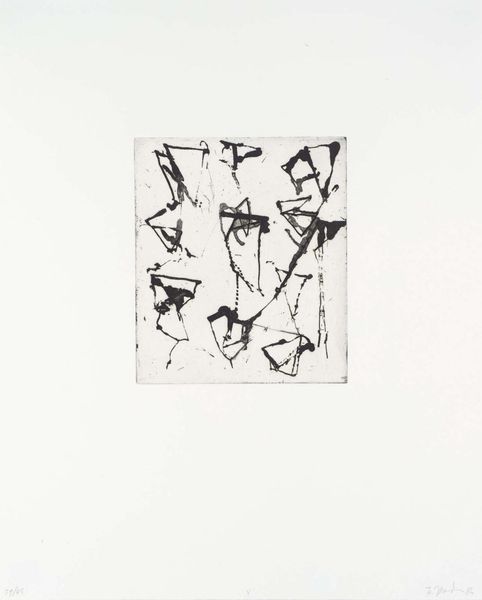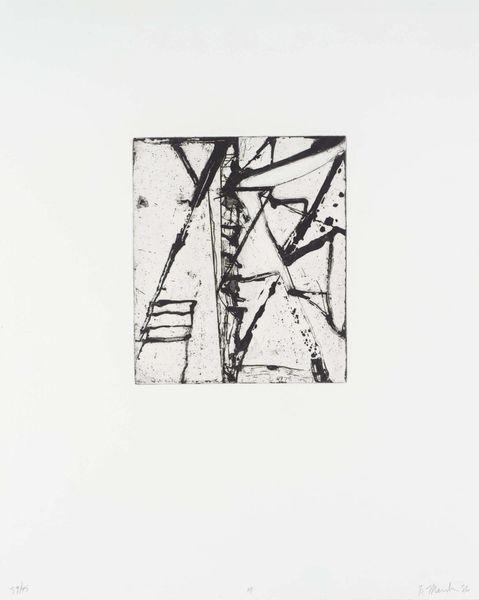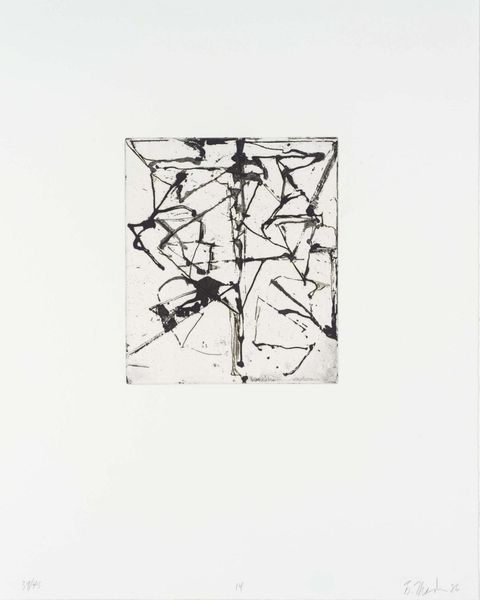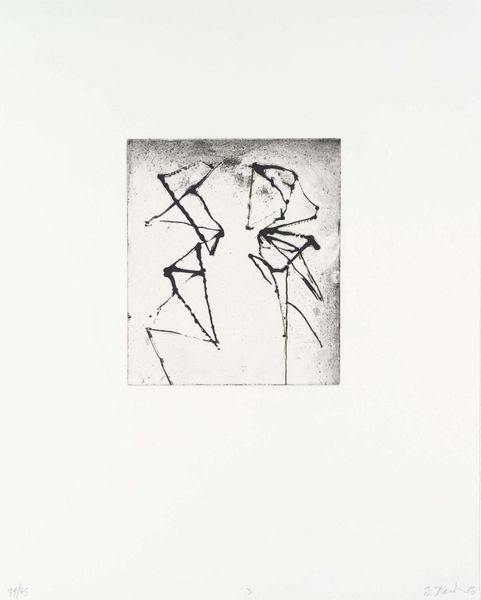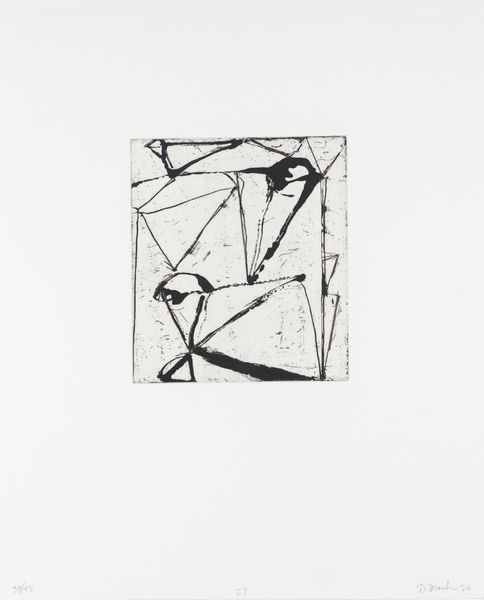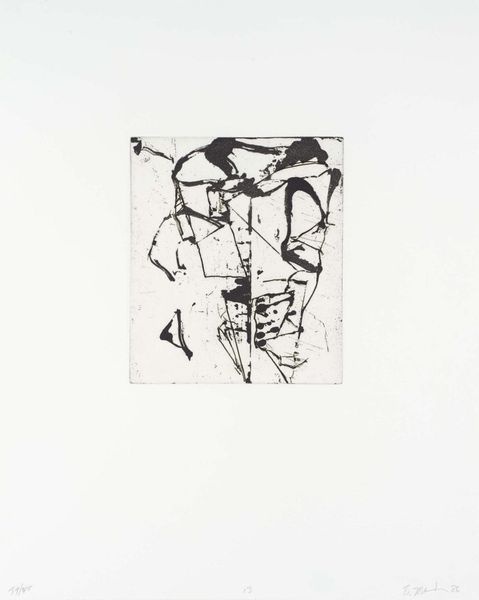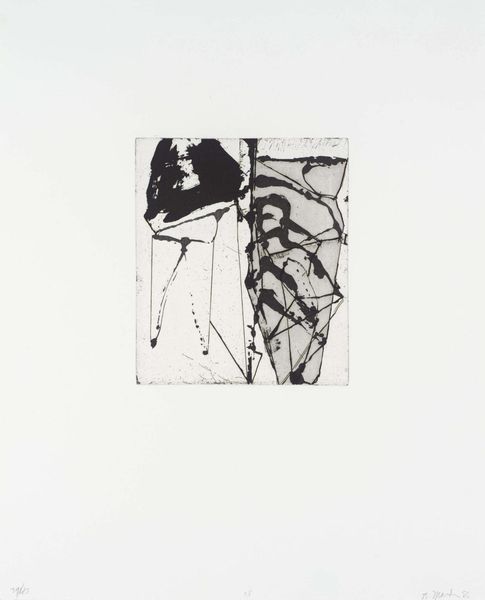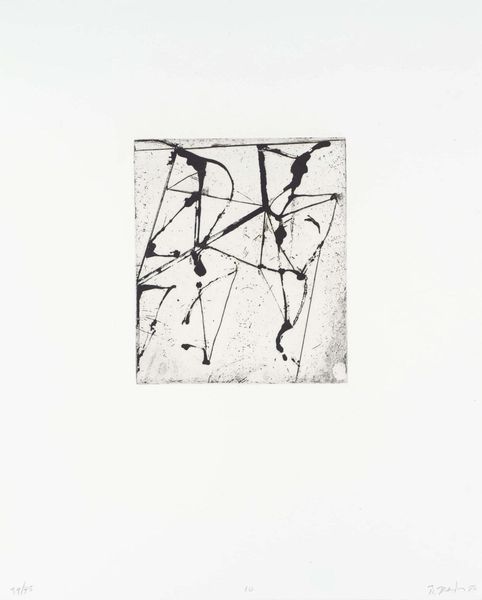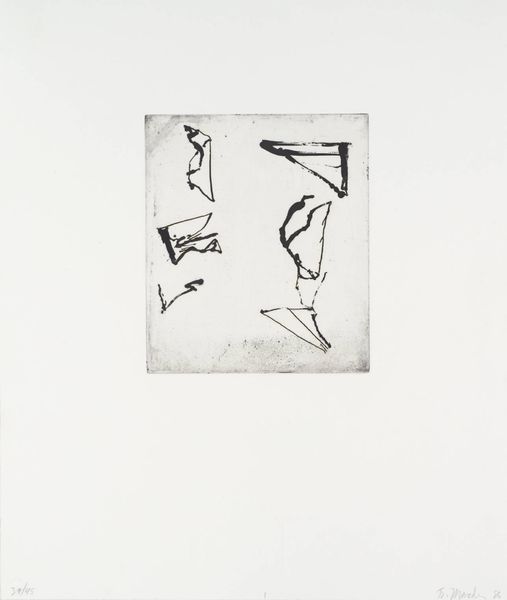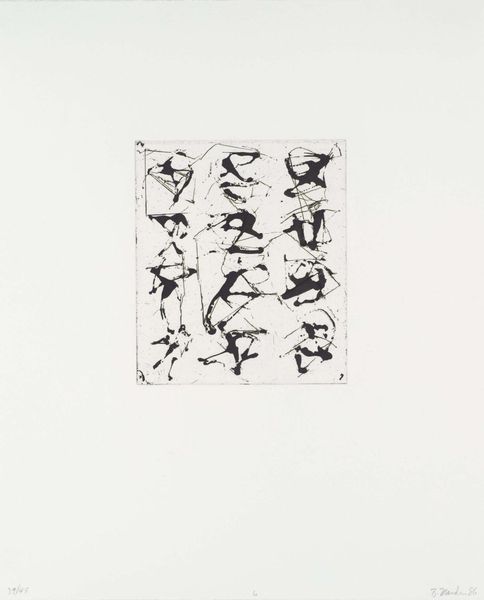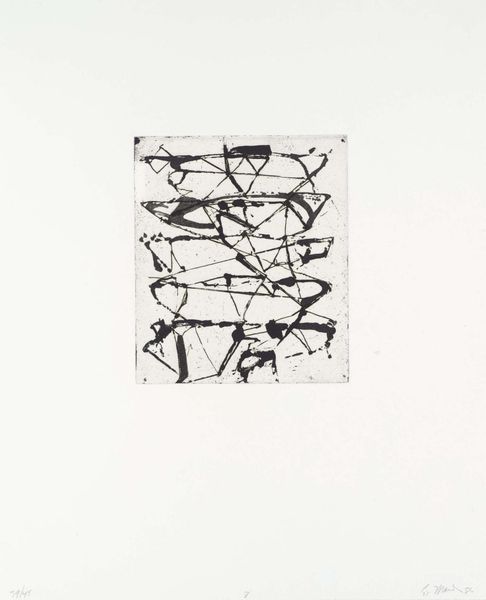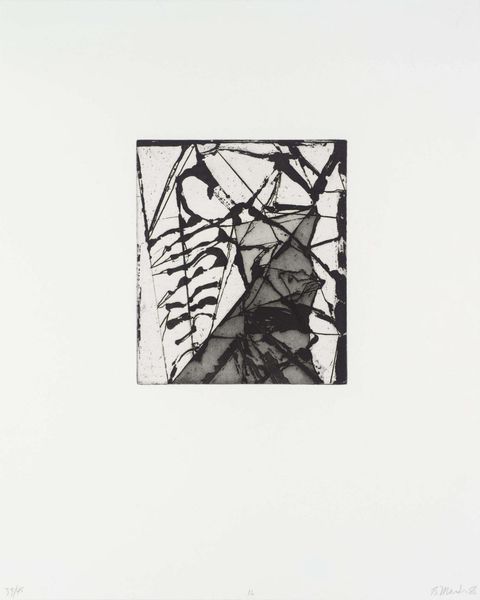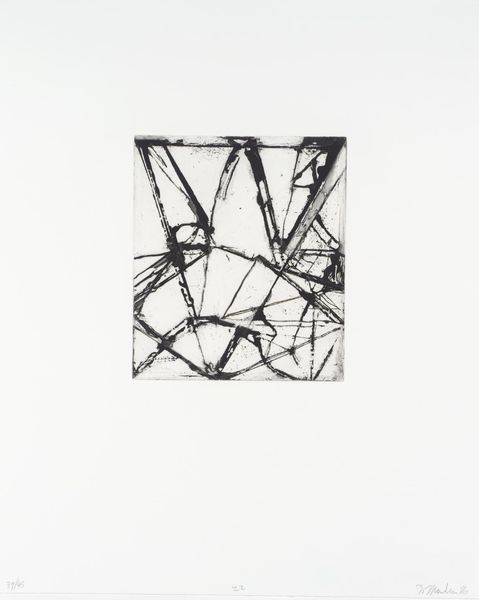
Dimensions: image: 202 x 174 mm
Copyright: © ARS, NY and DACS, London 2014 | CC-BY-NC-ND 4.0 DEED, Photo: Tate
Editor: So this is Brice Marden’s “12,” an undated etching at the Tate. It looks almost like a deconstructed figure, or maybe even a protest sign. What do you see in it? Curator: Marden’s work, especially his drawings, often reflects a struggle with representation within abstraction. Consider the social and political anxieties during the late 20th century—could these fractured lines symbolize a breakdown of traditional structures? Editor: That's interesting. I hadn't thought about it in terms of social commentary. Curator: Can we consider the artist's role as a mirror reflecting societal fragmentation? The stark black and white also evokes a sense of urgency. Editor: I guess the simplicity makes it more powerful in a way. Curator: Precisely! It challenges us to question the narratives we inherit. Editor: Thanks, I see it with different eyes now. Curator: Absolutely, art is a dialogue, constantly evolving with our understanding.
Comments
Join the conversation
Join millions of artists and users on Artera today and experience the ultimate creative platform.
tate 8 months ago
⋮
In this suite of prints (half of which are shown here), Marden saw himself as transmitting the energy that he ‘senses before nature’. He made a series of sign-like forms in response to the landscape near his Greek studio, which were then re-made in collaboration with the printmaker Jennifer Melby. Influenced by Asian calligraphy, Marden adapted his technique of using a stick dipped in ink in order to draw on the copper printing plate. The title reflects his discovery, halfway through the project, of the poet Kenneth Rexroth’s translations from the eighth-century Chinese poet Tu Fu. Gallery label, February 2008
